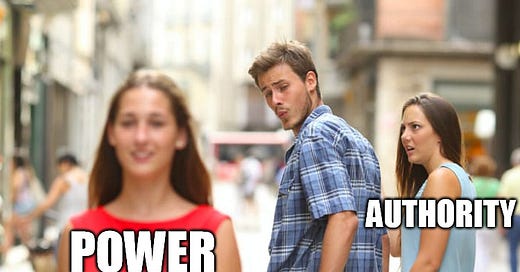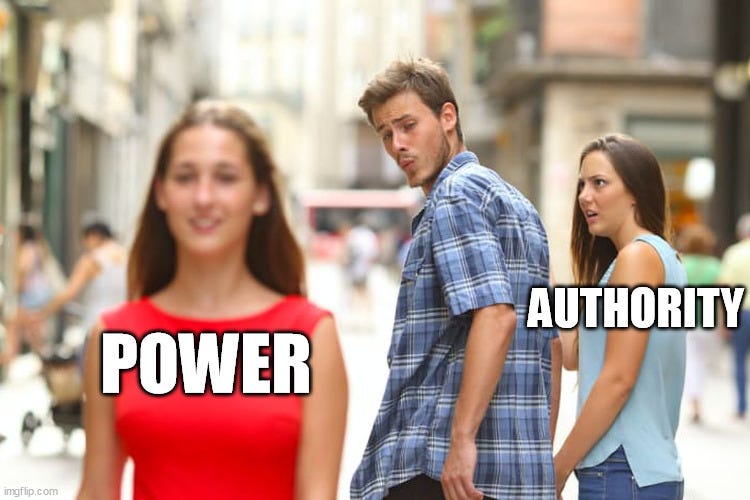Recently there was a debate on Dissident Substack over ‘right-wing cancel culture’, summarized here. I wasn’t exactly going out of my way to follow it. But my rough impression is that the advocates of principled restraint ended up in the minority.
This essay best sums up the rhetorical arsenal of the pro-cancel crowd. Recollections of leftist viciousness, exhortations to vengeance, insinuations of womanly squeamishness, and repetition of the old canard that ‘conservatives lose because they are too principled’ – all stacked on the assumption that the Trump shooting has permanently altered the structure of political reality, and topped off with some barbarist red meat in the form of this image:

My own position is that dissidents should not be stooping to such things. But I can see that most of them are not in the mood for moralist appeals, besmirched as they are by their use as fig-leaves for conservative cowardice. For my own part, I do not intend to make such appeals, since that would be far too flattering to the warrior fantasy encapsulated by the above image.
Let us try to separate this fantasy from the true nature of the dissident right. The following is quoted from René Guénon’s short work, Spiritual Authority and Temporal Power (pp.15-18, all emphasis mine):
The opposition between the spiritual and temporal powers is found in one form or another among almost all peoples. This is not surprising because it corresponds to a general law of human history… For the moment we shall restrict ourselves to two historical examples, one taken from the East and the other from the West. In India the antagonism between the spiritual and the temporal is found in the form of a rivalry between the Brahmins and the Kshatriyas…in medieval Europe it appears especially in the so-called dispute between the priesthood and the empire… It is only too easy to point out that the same struggle continues to this day, although due to the disorder of the modern world and the ‘mingling of castes’ it is complicated by heterogeneous elements that may sometimes conceal it from the notice of a superficial observer…
First of all, if we speak of two powers, and if we do so in cases where it becomes necessary for various reasons to maintain a certain external symmetry between them, we prefer to use the word ‘authority’ rather than the word ‘power’ for the spiritual order. The word ‘power’ can then be reserved for the temporal order, to which it is better suited when taken in its strictest sense. In fact, the word ‘power’ almost inevitably evokes the idea of strength or force, and above all the idea of a material force, a force which manifests itself visibly and outwardly and affirms itself by the use of external means, for such means indeed characterize the temporal power by its very definition. On the contrary, spiritual authority, interior in essence, is affirmed only by itself, independently of any sensible support, and operates as it were invisibly. If we can speak in this context of strength or force, it is only by analogical transposition, and, at least in the case of a spiritual authority [in its purest state] it must be understood that it is an entirely intellectual strength whose name is ‘wisdom’ and whose only force is that of truth.
The expressions sacerdotal power and royal power, which we have just introduced, call for even more explanation here. What exactly is meant by priesthood and royalty? To begin with the latter, we can say that the royal function includes everything that in the social order constitutes what is properly referred to as the ‘government’; and this is so even if the government does not take the form of a monarchy. This function belongs properly to the entire Kshatriya caste, for the king is no more than the first among them; it is in a way twofold: administrative and judicial on the one hand, and military on the other... As for the priesthood, its essential function is the conservation and transmission of the traditional doctrine, in which every regular social organization finds its fundamental principles.
Although Guénon is speaking of a premodern traditional order, the basic division of Brahmin and Kshatriya is perennial1, and it has not been abolished even by modern democratism. In the US government it takes the form of what Curtis Yarvin called Bluegov versus Redgov – a constant low-level struggle for precedence, with the academy-media, bureaucracy and left-wing revolutionaries on the ‘Brahmin’ side, and the military, police and right-wing ceremonial archons on the ‘Kshatriya’ one. If Guénon’s talk of ‘spiritual’ authority seems inappropriate to such materialist and atheist Brahmins, we need only substitute ‘intellectual’ or even ‘religious’ authority – and whatever you wish to call it, it is this authority that keeps the Brahmins on top and the Kshatriyas in a subordinate position, despite the fact that there is no contest in the realm of brute force.
Now let’s go back to the dissident right. This is not a physical community, much less a self-sufficient civilization, so it would be foolish to suggest that it has its own Brahmins and Kshatriyas performing their typical functions. Rather, dissidents are a collection of people from various walks of life, who like to theorize and dream about a better regime than the current democratist one. But if we want to form a replacement for that regime, we must ask in all seriousness which of its two ruling classes we must replace, and which one we have any real hope of replacing.
This means asking whether dissidents are better placed to take power or to take authority. And this is not a very difficult question.
Let us make some generalizations. The typical activity of the typical dissident is writing on the internet (or some equivalent involving recorded speech). Practically everything that he writes stakes out some sort of claim in the fields of truth, morality, and justice, or else undermines the claims of the regime in these fields. Though he cannot offer anyone political protection, let alone military protection, his writing wins for him a degree of authority – that is to say, he ‘redpills’ people, who begin to turn towards his words and away from the various mouthpieces of the democratist Brahminate.
Admittedly, this is all very far from Guénon’s vision of an ‘intellectual elite’ retvrning the West to Tradition. What the average dissident is doing right now is not even close to Yarvin’s conception of an Antiversity. But it is a start, and if nothing else, it proves that it is a lot easier to draw away authority from the media and academy than to wrest power from the military and police. (This tends to be the case in other regimes as well – uust look at the Christians in the Roman Empire, or the liberal philosophists in eighteenth-century Europe, two examples of ‘Brahmin’ movements that built up authority and eventually won power by converting the Kshatriyas who already had it.)
What our dissident ought to intuit from all this is that truth and authority are his natural business, decided by a vote of internal and external factors – his God-given duty, or to use another Vedicism, his dharma.
Unfortunately our dissident has dharma dysphoria. He doesn’t want to convert the Kshatriyas by telling truths and building up authority. He wants to be the Kshatriya, to exert strength, to take power. And he would rather pursue this fantasy than work for the accomplishments that are actually within his reach. This we may call (with all due apologies to the Sanskrit language) the kshitriya mindset.2
It is important to clarify that this fantasy of strength and power is corrosive to truth and authority; the dissident cannot have the worm and the apple. If he wants to play at politics, he must vote for ceremonial archons as if they were worthy leaders, and compromise with the stupid and fraudulent conservative movement. If he wants to play at activism, he must recruit placard-proppers instead of thinkers, and perform democratist public rituals that do not work for those without institutional patronage. And if he wants to seduce a mob (whether of somnambulent normies or midwit hipster ‘elites’) he must say only what it wants to hear, and deviate only strategically from its usual diet of propaganda slop.3
All of this reinforces the kshitriya mindset; yet its roots must be traced to the dissident himself. I suspect that it is an occupational hazard of losing faith in the democratist religion, and turning to see the revolutionary Brahminate for what it is. The dissident forgets that he himself has been attracted by truth into a group with no power at all. He builds up a cynical worldview in which truth ‘does not matter’ (i.e. has no social force) and all authority is merely veiled power. This we see, for example, in those serpentine conspiracy theories that admit only force, fraud, folkishness and filthy lucre as motivating factors. Or, at a higher level, in the veneration of Nietzsche and Evola – both of whom deviated from wiser teachers (Schopenhauer and Guénon respectively) in order to exalt the warrior over the sage.
Needless to say, if truth does not matter and all authority is power, then it follows that the dissident cannot hope to persuade anyone of his truth except by force. Thus he fails to see any value in writing and thinking, and longs instead for what we might call the dharma transition – the daunting rite of passage that will jumpstart him into action. Most often he locates this in the indefinite future, waiting to be actualized by ‘the collapse’ or ‘the uprising’; but every now and again, he tries to make it happen in the here and now, by ‘getting off the internet and doing something’.
For a case study at scale, we can look at the Great Dharma Transition of the Alt-Right in the years 2016-18.
This had started life as an ‘idea-space’ for all those excluded and alienated from neoconned right-wing politics. Those involved had not renounced politics in principle; but they had little immediate hope of influencing it, so they decided to bide their time with discussion, while leaving the usual demands for rigid ideological fealty at the door. This proved wildly popular (perhaps too popular), spreading through the internet like wildfire, and converting young people to reactionary views. At last its gravitational pull (and that of the internet in general) began to drag upon mainstream politics as well – so that, when Donald Trump ran a publicity-stunt campaign for the US Presidency in the teeth of media ridicule, to his lasting inconvenience the people ignored the media and actually voted him in.
This triggered a kind of mass euphoric mania in Alt-Right spaces. Critiques of democratism and electoral politics were tossed aside as too pessimistic, as if they were based on nothing more than emotion. Everyone agreed that it was time to ‘get serious’ – not by using the online free press to spread something more serious than Nazi frog memes4, but by forsaking the ‘intellectual masturbation’ with which the movement began, and turning it into a centralized activist organization. The result was the death of the Alt-Right in a grotesque slapstick tragedy of Zombie Hitlerism, purity purges, leadership struggles, ‘goon rallies’5, deadly street brawls with leftist mooks, and state crackdowns that the movement had done everything to provoke.
Has anyone on Dissident Substack today learned a damned thing from any of this? I’d like to think so – but to judge from those pro-cancel posts, with their deluded optimism and eagerness to do battle under the flimsy aegis of Trump, some of us are drinking deeply of the poison that intoxicated the Alt-Right.
I shall make a prediction, which I hope will be proven wrong. What we might be seeing with all this ‘cancel culture’ rhetoric is the warm-up to another mass dharma transition – one that may be triggered by the electoral victory of Trump, or else some event involving bullets or ballots that serves to prevent this. Either way we can expect to see a new pestilence of activists swarm into Dissident Substack and start appointing themselves as ‘leaders’, while demanding that no-one ‘countersignal’ their politics and recklessly provoking the regime into attacking the free press.
What matters is whether the writers, thinkers and artists in this space will slavishly defer to the activists, or pass the test that the Alt-Righters failed. At least we have a new word to throw back when they call us ‘cucks’, ‘do-nothings’, ‘anonymous cowards’, ‘squeamish women’, etc. etc. Sorry that it doesn’t exactly trip off the tongue.
More precisely, the functions of authority and power are fundamental and thus perennial. Some premodern societies have lacked a traditional priestly class, and it is significant that this was the case in the Norse society so idolized by dissident rightists. Yet the function of spiritual authority remained, and seems to have devolved largely on seeresses, one of whom gets to instruct the god of prophecy in the Havamal.
By ‘kshitriya’ I mean, as the respelling implies, a false imitation of a Kshatriya (cf. ‘shemale’ vs. ‘female’), with no pejoration meant towards actual fighting and power-holding men. It is best not to think of the kshitriya as a specific type, but as a general undesirable tendency among dissidents, like the ‘coomer’ among NoFappers or the ‘Pharisee’ among Christians.
More fundamentally, if someone without power wants to ‘fight’ in a regime that has monopolized physical force, then he must sell his soul to some faction of the regime that can grant him the necessary muscle. This is what we see in the pro-cancel crowd, who can only exert power by fighting Trump’s cause instead of their own (and it is seen more widely in any number of tame conservatives, who must spend each day asking what a woman is and defending Israel’s right to exist, in the hope that they may one day be allowed to ask what a man is and defend England’s right to exist). Those who are determined to tell truths in defiance of an entire regime must renounce the hope of physical redress – and this is at least part of the idea behind ‘turning the other cheek’, a teaching for which dissidents think they are too strong when they are really far too weak.
If people did not take such memes seriously, they might be defended as ritual desecrations of images sacred to the state religion, analogous to democratist attacks on Christian sacred images (of which the opening ceremony of the Paris Olympics is only the latest example). On the other hand, the use of a free press to troll a regime into censorship is pretty idiotic, and one cannot help but wonder whether this ‘strategy’ is not perversely adaptive for activists. As we have seen at scale in Ukraine and Gaza, it is possible for a war-party to unite a whole community into a Schicksalgemeinschaft, by provoking an enemy in such a way as to ensure that its reprisals fall upon everyone.
This is one of those words that age like fine wines, acquiring new flavours as the language changes around them.






h1b pajeet would've been all over this
This is a very good post. Bravo.
I see the bhramin/kshatriya divide as a manifestation of the yin/yang duality (with Brahmin the yin). The question of why Brahmin is seen as the higher caste has long been interesting to me.
But I am not sure “truth” is the right knife to cut here. There are different kinds of truth. Specifically, there is a truth of effectiveness which shows up in politics and military, also engineering.
Then there is moral truth, the ought.
So if you are concerned with, say, mathematics, which kind of truth is it? Maybe there is a triad the father (power), the son (authority), and the spirit (math).